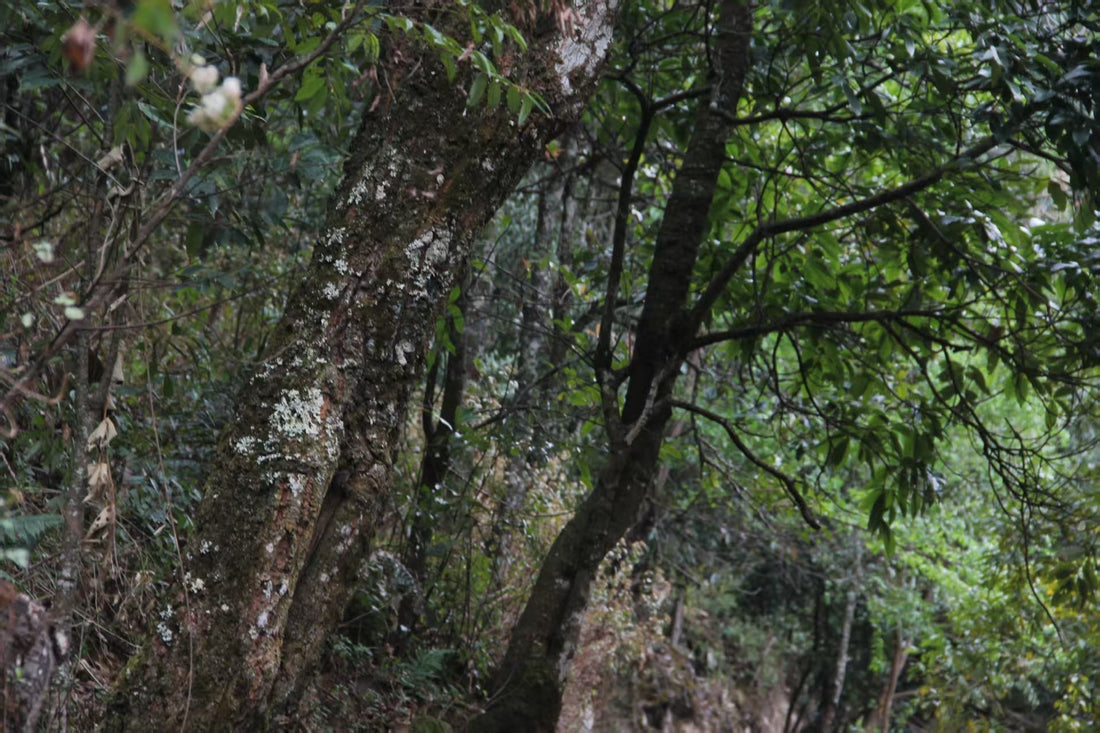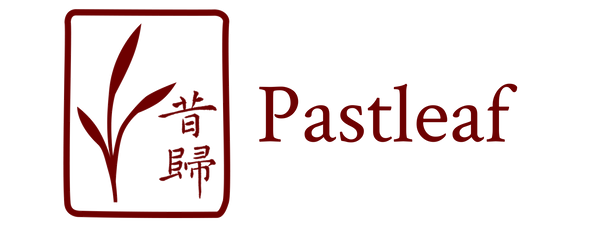
Wuliang Shan: Die vergessene Wiege des Pu-Erh-Tees
Aktie
Wenn man über Pu-Erh-Teeregionen spricht, fallen meist zuerst Namen wie Yiwu, Jingmai oder die Sechs Alten Teeberge. Doch lange bevor diese Orte berühmt wurden, legte eine andere Region den Grundstein für Yunnans Teekultur: Wuliang Shan.
Eine Entstehungsgeschichte der Tang-Dynastie
Im Jahr 864 n. Chr. schrieb ein Beamter der Tang-Dynastie namens Fan Chuo das Manshu 《蛮书》 Beschreibung des Tees aus den Bergen rund um die Stadt Yinsheng:
„Tee kommt aus den Bergen rund um die Stadt Yinsheng. Er wird wild gesammelt, nicht angebaut.“
Yinsheng war die Hauptstadt der Provinz Nanzhao im heutigen Kreis Jingdong in Yunnan, direkt am Fuße des Wuliang Shan. Das Königreich Nanzhao (738–902 n. Chr.) war ein mächtiges Staatswesen, das Han-China, Tibet und Südostasien verband. Yinsheng war eine seiner teereichen Grenzprovinzen. Textfunde aus dem Manshu datieren die schriftliche Geschichte des Pu-Erh-Tees auf über 1.150 Jahre zurück, Jahrhunderte bevor Xishuangbanna und Yiwu überhaupt erwähnt wurden.
Wenn wir Wuliang Shan außer Acht lassen, gerät die angeblich 1.400-jährige Geschichte des Pu-Erh-Tees ins Wanken. Das berühmte Chali Xuanweisi (ein Teehandelsbüro) in Xishuangbanna stammt erst aus der Ming-Dynastie. Was geschah also in diesen über 500 Jahren? Die Antwort liegt in den alten Wäldern Wuliangs. Archäologische und botanische Forschungen stützen die Annahme, dass Wuliang und die nahegelegenen Ailao-Berge einige der ältesten von Menschen bewirtschafteten Teewälder beherbergt haben könnten, noch vor den intensiven Anbaumethoden, die man anderswo in Süd-Yunnan sieht.
Die Geographie des Wuliang Shan
Wuliang Shan bedeutet „grenzenloser Berg“. Zusammen mit den benachbarten Ailao-Bergen war Wuliang eines der ersten großen Teeanbaugebiete Yunnans. Tee wurde hier bereits Jahrhunderte vor anderen Regionen angebaut. Diese Berge am Ostufer des Lancang-Flusses (dem oberen Mekong) bildeten den ursprünglichen Kern der heutigen Puer-Teeregion, eingebettet zwischen Lincang im Norden und Xishuangbanna im Süden.

Im Laufe der Zeit wanderten die Menschen und die Teekultur des alten Yinsheng-Gebiets allmählich nach Norden und Süden in die Gebiete, die heute Xishuangbanna und Lincang sind. Ihr Einfluss lebt jedoch in den alten Teebäumen weiter, die im Wuliang Shan tief verwurzelt sind.
Die nebligen, bewaldeten Hänge des Wuliang Shan erheben sich über dem Lancang-Fluss und beherbergen viele alte Laubbäume, von denen viele noch halbwild unter dem Blätterdach des Waldes wachsen. Einheimische, insbesondere die ethnischen Gemeinschaften der Yi, leben hier seit Jahrhunderten und bauen neben Reis, Mais und Buchweizen auch Tee an. Dieses traditionelle Agroforstsystem schützte den Boden, bewahrte die Artenvielfalt und ermöglichte ein autarkes Leben in den Bergen.



Viele Teegärten hier sind noch heute Teil des alten Mischkultur-Modells und werden oft an Hängen oder Waldrändern angelegt. Der natürliche Schatten von Walnuss- und Pfirsichbäumen trägt zur Entwicklung der komplexen Blätter bei. Es ist einer der wenigen Orte, an denen uraltes landwirtschaftliches Wissen nahezu unverändert erhalten bleibt. Felduntersuchungen von Agrarforschern bestätigen, dass die Teefelder von Wuliang oft eine Baumkronenbedeckung von über 60 % aufweisen und eine überdurchschnittlich hohe mikrobielle Aktivität im Boden aufweisen, was für die langfristige Gesundheit der Teebäume entscheidend ist.

Die Teepflanzer
Der Tee folgte den Menschen, und die Bewohner des Wuliang Shan gehörten größtenteils verschiedenen ethnischen Untergruppen der Yi an, die in alten Texten auch unter Namen wie Luoluo, Lalu oder Limi bekannt sind. Sie kamen aus den kälteren, hochgelegenen Regionen Tibets und West-Sichuans und wanderten allmählich Richtung Süden nach Yunnan. Die Yi sind eine der größten ethnischen Minderheiten Chinas. Historisch gesehen waren sie Halbnomaden und eng mit der Berglandwirtschaft verbunden. Sie entwickelten einzigartige Kenntnisse in der Forstwirtschaft, der Landwirtschaft und dem Teeanbau. Wo immer sie sich niederließen, pflanzten sie Tee an. Noch heute leben ihre Nachkommen in Dörfern am Wuliang Shan und in Jingdong, Jinggu und Fengqing.
Aufstieg und Fall der Yinsheng-Teeregion
Von etwa 800 bis 1200 n. Chr. war Wuliang Shan die wohlhabendste Teeregion in Yunnan. Doch 1264, während der Yuan-Dynastie, änderte sich alles. Ein lokaler Anführer, Sheliwei, führte einen Aufstand gegen die mongolische Armee an und wurde niedergeschlagen. Dies führte zu massiver Vertreibung der Bevölkerung und dem Zusammenbruch der Teewirtschaft in Yinsheng.
Später, während der Ming-Dynastie, kamen Han-Siedler mit einer Armee und eroberten das Land. Das alte Teeanbausystem wurde zerstört, und die offizielle Unterstützung verlagerte sich nach Süden, Richtung Xishuangbanna. Damit begann der Aufstieg des Pu-Erh-Tees, wie wir ihn heute kennen.
Das Erbe von Wuliang Shan
Obwohl Wuliang Shan aus den historischen Aufzeichnungen verschwunden ist, ist sein Erbe in seinen alten Teebäumen und seinem unverwechselbaren Teearoma erhalten geblieben.
In der Tasse bieten diese Tees meist einen klaren, goldenen Aufguss, leichte Honigaromen und eine sanfte Frucht- oder Zuckersüße, die sich mit der Zeit aufbaut. Die Bitterkeit ist moderat, wird aber durch die Adstringenz ausgeglichen, die zu einem zufriedenstellenden Hui Gan (wiederkehrende Süße) führt. Viele Wuliang-Tees, insbesondere gealterte Exemplare, bieten ein stärkeres und länger anhaltendes Hui Gan als andere Regionen.
Ein Terroir, das für sich selbst spricht
Wuliang Shan ist ein Terroir, das vielleicht mehr Anerkennung verdient. Im Gegensatz zu berühmten Bergtees aus Xishuangbanna oder Lincang, deren Preise aufgrund von Markthype und Markenbildung in die Höhe geschossen sind, bleiben Wuliang Shan-Tees erschwinglich, authentisch und werden unterschätzt.




Verweise
Fan Chuo (樊绰), Manshu (《蛮书》), 864 n. Chr.
Xu, Y., Zhang, Y., & Liu, M. (2012). „Verbreitung und Domestizierung wilder Teebäume in Yunnan.“ Journal of Tea Science, 32(4), 293–298.
Li, X., & Zhang, L. (2020). „Historische Geographie der alten Teeregionen in Yunnan.“ Yunnan Agricultural University Press.
Zhao, D. et al. (2016). „Mikrobielle Bodenvielfalt in alten Teeplantagen im Wuliang-Gebirge.“ Chinese Journal of Eco-Agriculture, 24(1), 93–100.
Zhang, R. & Wu, W. (2018). „Traditionelle Agroforstwirtschaft der ethnischen Minderheit der Yi in Wuliangshan.“ Ökologie & ländliche Umwelt, 34(5), 575–580.
Luo, C. (2019). „Blindverkostung: Bewertung von Pu'er-Tees ohne Markennamen aus weniger bekannten Bergen.“ China Tea Monthly, 11, 42–45.
